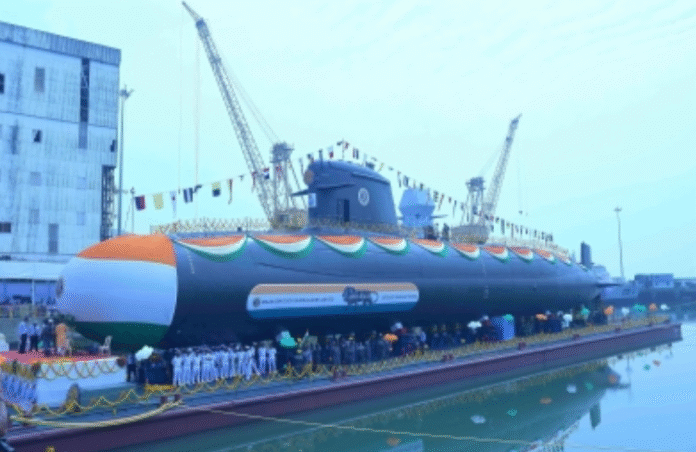NEW DELHI– India’s ambitious Project-75(I) submarine program represents a decisive advancement in undersea warfare, enabling the Navy to conduct continuous covert patrols across key sea lanes and reinforcing its role as a regional security provider, according to a report published Tuesday.
A central feature of the program is the integration of fuel-cell-based Air Independent Propulsion (AIP) systems, which extend underwater endurance dramatically. Current Scorpene-class submarines can remain submerged for about 48 hours, but the new AIP-equipped boats will be able to stay underwater for nearly three weeks. India Narrative noted that this shift is set to alter the strategic balance in the Indian Ocean by boosting deterrence and power projection.
“At the heart of Project-75(I) is the fuel-cell-based Air Independent Propulsion system. Unlike traditional diesel-electric submarines, which must surface or snorkel regularly to recharge batteries, AIP enables submarines to generate electricity underwater without atmospheric oxygen. This not only lengthens submerged endurance but also drastically reduces opportunities for detection,” the report said. “By staying below the waves for extended periods, submarines equipped with AIP are harder to track and target, which in modern naval warfare can mean the difference between mission success and catastrophic loss.”
The enhanced endurance is expected to broaden India’s mission capabilities — from long-range intelligence gathering and deep surveillance in contested waters to maintaining persistent presence near strategic chokepoints such as the Malacca Strait and the approaches to the Persian Gulf.
“In the context of India’s primary maritime rivals, China and Pakistan, this capability closes a dangerous gap. Both nations already field AIP-equipped submarines. By matching and potentially surpassing these endurance benchmarks, India is rebalancing the undersea deterrence equation in the Indian Ocean Region,” wrote Arjun Mehta in the report.
The uncertainty created by longer deployments and reduced detection opportunities, the report added, forces adversaries to commit more resources to locate Indian submarines. “The reduced acoustic and radar signatures of AIP boats, coupled with fewer surfacing events, multiply this uncertainty. This is especially critical in the IOR, where control over chokepoints can have global economic implications. With Project-75(I), India can maintain continuous covert patrols across these strategic sea lanes, reinforcing its position as a security provider in the region,” Mehta wrote.
Beyond its military significance, Project-75(I) is expected to boost India’s defense manufacturing ecosystem. The program mandates 45 percent indigenisation in the first submarine, rising to 60 percent by the sixth. This localization drive is seen as a way to strengthen the domestic defense industry, foster technological independence, and build long-term expertise in submarine construction. (Source: IANS)













